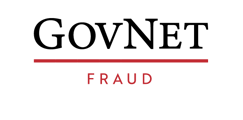In Q1 2023; from the start of January to the end of March, Moody’s Grid database confirmed 34,818 fraud alerts, 12,536 money laundering alerts, and 3,115 terrorist financing alerts. The scale of risk is huge, and the obligation to identify and prevent financial crime is growing. But criminal activities are always evolving - new types of fraud are identified, cyber risk is now mainstream, and sanctions evasion moves on.
Preventing financial crime is a heavy burden for companies in the private sector, and institutions can’t shoulder the burden alone. That’s why there is increased collaboration between the public authorities, regulators, and the private sector. And partnerships between institutions in the private sector are also forming to take a broader, more unified stance on crime prevention and reporting.
One way regulators and the regulated, i.e., national authorities and private companies are coming together and unifying their approach to fraud, money laundering, and terrorist financing is through data sharing.
AML/CTF data sharing
Banks based within certain countries, such as Hong Kong, Singapore, the Netherlands, and the UK, have joined forces in data sharing programs. The institutions in-country share data on suspicious activity, while maintaining security protocols to protect sensitive information. The objectives of TMNL in the Netherlands for example, which brings together five Dutch banks, are:
- To identify money laundering and terrorism financing faster, better and more comprehensively, and to contribute to their prevention;
- To improve the utility of the reports of unusual transactions to the authorities, so that identification can lead to more investigations, prosecutions and convictions; and
- To contribute to the optimization of the use of public and private resources in the fight against money laundering and terrorism financing.
The spirit of this data-sharing is to disseminate known risk, and to save time and money in AML and CTF efforts. Rather than waiting for the institution to be approached, to run due diligence, and uncover risk, information on suspicious activity is being imparted between banks.
Iterating AML/CFT collaboration
In previous attempts at collaboration, authorities would flag risks to institutions by issuing alerts related to new threats and new criminal typologies. The details of the threat and its characteristics would be communicated as an alert, then the financial institution would have to increase its controls and strengthen procedures to accommodate the identified issue. However, there was no feedback loop.
Now, there is more maturity in collaboration processes. The UK Government for instance is launching its Economic Crime Plan 2, which sees Government, law enforcement, and private sector agreement on a new approach to tackle “money laundering, kleptocracy and sanctions evasion.”
Included in the plan is budget for and recruitment of 475 trained financial crime investigators, working in intelligence, enforcement, and asset recovery. According to an article on the gov.uk website, “this increased capacity will be targeted toward the detection and disruption of money laundering, and the recovery of an additional £1 billion in criminal assets over the next 10 years.”
In the Netherlands, individuals and organizations known to be involved in criminal activity or who have been convicted of financial crime are being targeted by national AML/CTF programs. A collaborative platform made available by the national authority is being shared with firms in the private sector. While the public attorney provides information about terrorists and those under investigation. These proactive actions are being taken to catch criminals by preventing money trails from disappearing and going cold.
Summary
While the threat and risk of financial crime grows, the burden of prevention, detection, and policing of fraud, money laundering, and terrorist financing is too much for private companies to carry alone. Especially as if things do go wrong and there are compliance failings, it’s the institutions who also has to pay the fines, and these fines can be huge. That’s why there is increased focus on collaboration between governments, regulators, and private sector firms. And why there are more joint programs for data sharing on bad actors and the types of crime they commit in order to combat the issue with combined force.
Get in touch
Moody’s Analytics is transforming risk and compliance, creating a world where risks are understood, so decisions can be made with confidence about whom you work with.
For more information about our AML and CTF solutions, including accessing alerts via our Grid database, please get in touch – we would love to hear from you.

